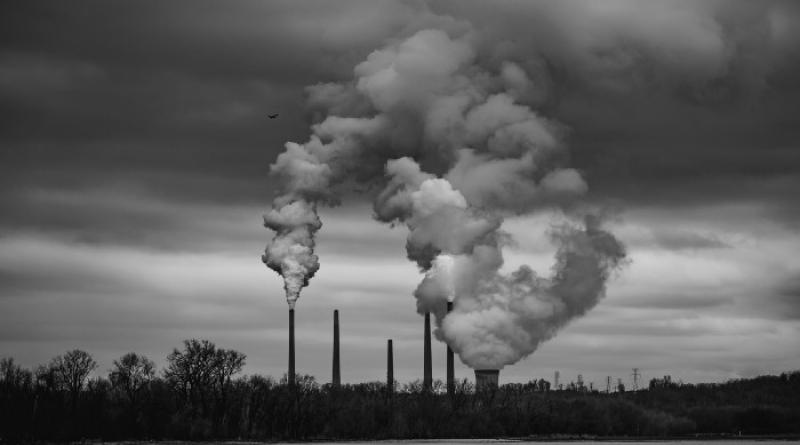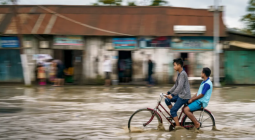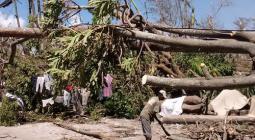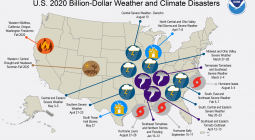5 Looming Environmental Crises That Rival Climate Change.

Humans are transgressing planetary boundaries on several fronts.
In November of 2019, 11,000+ of the world’s foremost climate scientists published a bleak forecast of rising global temperatures that cannot be averted apart from drastic societal alterations the world over. It allows for little time to course-correct, meaning that the required changes will likely be painful. Such reports understandably dominate both science news and public policy debate, but they fail to take the full measure of human-caused environmental injury.
That’s because human activity currently portends irreversible damage to several planetary boundaries necessary to human life. Among the most alarming crises are biodiversity loss, nitrogen cycle change, groundwater depletion, ocean acidification, and peak phosphorous. Alone, each of these crises is enough to precipitate widespread human suffering. Together, along with climate change, they present the gravest threat in the history of humanity to the survival of our species.
Biodiversity Loss
Biodiversity is the variety of life on earth. Human beings rely on a host of organisms for food, medicine, shelter, and clothing; as biodiversity diminishes, so do our basic necessities. Fostering biodiverse biomes is, therefore, a fundamental human concern.
Numerous human activities daily erode biodiversity on earth. Deforestation is a principal contributor to biodiversity loss; human demand for land development, fossil and wood fuels, and building materials result in the loss of 18 million square acres of forest each year. Many animal species rely on old-growth forest habitats for survival and gradually die out in the aftermath of forest consumption by humans.
Experts estimate that the human-caused species extinction rate is up to 10,000 times greater than the natural background extinction rate; ironically, the more forests that humans convert to farmland, the more the pool of available resources shrinks. In 2019, the Intergovernmental Science-Policy Platform on Biodiversity and Ecosystem Services reported that up to one million plant and animal species are facing extinction due to human activity.
Overexploitation — such as overfishing, overhunting, and over-harvesting — also threatens the earth’s biodiversity. So too do pollution and human introduction of invasive species. Infectious disease, nutritional decline, and medicine shortages are all consequences of biodiversity loss for humans, and that is before we even calculate the impact of those losses on global warming.
Nitrogen Cycle Change
All of earth's organisms — including humans — require nitrogen for survival. Peptides, amino acids, and proteins all incorporate nitrogen in their molecular structure and each of those compounds is essential to life (Cunningham, The Principles of Environmental Science 46). 78% of the earth’s atmosphere is constituted by nitrogen, and the nitrogen cycle transfers nitrogen into numerous vital chemical compounds as it circulates throughout the planet.
Human agricultural and industrial practices have dramatically altered the earth’s natural nitrogen cycle. Synthetic fertilizers, industrial pollution, and vehicle exhaust double the natural conversion of nitrogen to ammonia and nitrates every year. The excess of those nutrients in the environment results in the mass elimination of saltwater fish, thus reducing the food supply and oceanic biodiversity.
Additionally, excess nitrogen depletes soil nutrients necessary for crops, such as calcium and potassium. Again, our ever-growing consumption of produce reared on industrial farms is serving to make food increasingly scarce. Consider, too, that nitrous oxide is a greenhouse gas and the consequences of human-caused changes to the nitrogen cycle appear grim, indeed.
Groundwater Depletion
Groundwater accounts for nearly half of the domestic and agricultural water supply in the United States. Unfortunately, current consumption vastly outstrips the water table refill rate, and demand is only expected to increase in the coming decades. The United States is not alone in this problem; every nation on Earth is scrambling for freshwater reserves.
Alarmingly, groundwater pumping compounds the duration of refill times and sometimes makes replenishment impossible altogether. As wells and aquifers run dry, the absence of water pressure precipitates surface settling and collapse that closes spaces once occupied by groundwater. Thus, the more groundwater we use, the less we are able to store going forward.
In addition to obvious consequences like crop and sanitation failure, groundwater depletion can lead to disastrous social conflicts and even war. Between 2007 and 2010, drought in Syria drove millions of rural people into cities, where tensions quickly mounted and civil war ensued. Rising temperatures associated with climate change exacerbate the problem, which means that competition for freshwater will only intensify going forward.
Ocean Acidification
Carbon emissions affect more than global temperatures. The world’s oceans absorb roughly 30% of the carbon dioxide that human activity releases into the atmosphere. Because of oceanic CO2 absorption, ocean acidity has increased 30% globally since the start of the Industrial Revolution.
Shellfish and corals, which constitute vital strands in oceanic food webs, are particularly vulnerable to rising seawater acidity. If the trend in acidity holds, researchers predict dramatic losses to calcifying saltwater species by the year 2100. Given that over a billion people currently rely on marine life for protein, big carbon emitters such as the United States, China, and India must convert to clean energy in the immediate future; the world’s climate and food reserves are equally at stake.
Peak Phosphorus
While nitrogen contamination imperils ocean life, Phosphorus pollution threatens freshwater fish. Phosphate ores primarily come from ancient salt deposits in sea beds and are used to make artificial fertilizers and detergents (Cunningham, The Principles of Environmental Science 48). Excessive mining of those deposits has led to widespread adulteration of the world’s rivers and streams.
Phosphorus is also a key ingredient in human bone. Because phosphate deposits replenish at a rate drastically slower than human consumption of the essential mineral, scientists worry that we will one day exhaust its available supply and thereby cause pandemic malnutrition and agricultural failure. In the long run, phosphorus always returns to the oceans, but that return may come too late for humanity if we don’t change our ways now. Global phosphorus shortages are predicted by as early as 2040; whenever it happens, the human population will starve, and financial wealth will not insulate against suffering for long. Peak phosphorus is, therefore, an even more pressing problem than climate change.
Knowledge is Power
While climate change is certainly worthy of our attention, a host of other environmental crises demand aggressive responses, as well. Biodiversity loss, the nitrogen cycle, groundwater depletion, ocean acidification, and peak phosphorus each threaten humanity at the species level, and taken together could potentially spell our extinction. Even if carbon sequestration and other technologies catch up to climate change, we must still learn to live on far less if we hope to survive the coming environmental crises.
21 December 2020
medium




